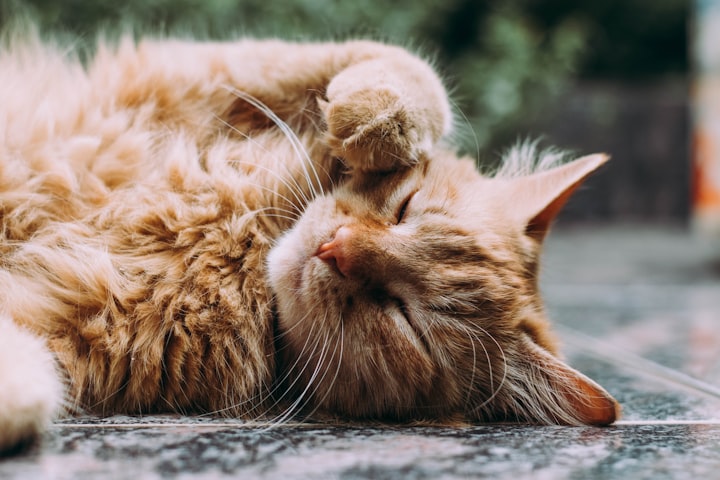How Do You Understand Your Cat's Mind?
Top 6 signs to understand the language of their mind

It's hard to find people who don't like cats. You must be a cat fan too. Cats have all kinds of moods, from stress or frustration to excitement or joy! It is possible to get an idea of its mood from the body posture and voice of the cat. Wondering how?
Cats are one of the most popular pets in the world, as they are cuddly, sleepy, happy, and relaxed pets. Cats are busy with various activities throughout the house throughout the day. It sometimes makes different noises or sometimes engages in sports. But the funny thing is, these behaviors give us an idea of the cat's mood. Wondering? Can a cat have a mood? Yes, of course!
Excited or happy, frustrated, stressed, etc., all kinds of moods in the cat. Cats can use their eyes, ears, tail, and whole body for communication. Let's know about the top 6 signs and how to get an idea about the mood of the cat.
1. When the cat is sure and satisfied, it stays in a comfortable position. If they are in such a mood, they feel quite lively. This is usually done by leaning on one side or leaning back. Sometimes it is seen rubbing on the floor with nails or making grunting.
When they are in a relaxed mood, most of the time their tails are fixed, keep their ears upright, and their eyelids partially or completely closed. When your favorite cat looks at you with partially closed eyes, you realize that it trusts you a lot. It trusts you so much that it doesn't need to be cautious of its enemies when you're around.
2. When your cat looks at you very slowly and gently rubs its head or back against your body, you realize that it is very happy. A cheerful cat is much more agile than a restless cat. Other cats, dogs, or people in the house are seen happily making different noises. Very happy cats usually have straight tails. The tail hairs are flattened instead of swollen. The ears are kept upright at the front.
3. Seeing the cat in a playful or playful mood, how much it wants to caress with its lap! They pull their tail up and move to show their friendly behavior with other cats or humans. Most of the time they play like predatory cats. They love to play with things like toys or laser lights.
4. Cats that are under stress are always hiding. They want to stay away from anything that creates stress. If they can't hide somewhere, they will make gestures that will try to explain a problem. The head, ears, and tail can be seen walking backward. And when it tries to make itself look bigger by pulling its tail and back upwards, then it must be understood that the cat is scared.
5. An angry cat cannot be understood before biting or biting someone. Cats get angry quickly when they are under a lot of stress or fear. But they will warn you about what they are looking for. Cats settle down before attacking. It can straighten or tilt the tail. It can aim an attack. When angry, the cat's ears are tight.
If you see such signs in your cat, move away and give it time to calm down. Don't go near cats that are in such a mood, as they may be attacked. The cat is trying to warn you by its body language.
6. It is difficult to understand when a cat is sick or injured. Because they can hide illness, weakness, and injury. You do not have the permission required to post. You do not have the permission required to post. When cats get sick, they show aversion to water or food, dig, open their mouths, breathe, and so on.
If you notice any of these symptoms in your favorite cat which can be harmful to him, consult a veterinarian immediately. Many people keep cats as a hobby. Again, many are thinking of keeping cats. So keep these things in mind before petting a cat.






Comments
There are no comments for this story
Be the first to respond and start the conversation.